A Rising Tide Lifts All Boats
How a Robust Data Library Can Help Everyone—From Small Startups to Big Universities—Get Data They Need To Advance Marine Energy Industry
Jon Weers was doing data science before it was called “data science.”
During the "Harry Potter" craze, he helped redesign the Denver and Chicago public library systems to automatically purchase high-demand books. He worked with the White House and the United Nations to tame big, unwieldy data sets, like power outage data for first responders and data on renewable energy potential in developing countries. (If that is not impressive enough, he is also an Eagle Scout and certified snowboarding instructor.)
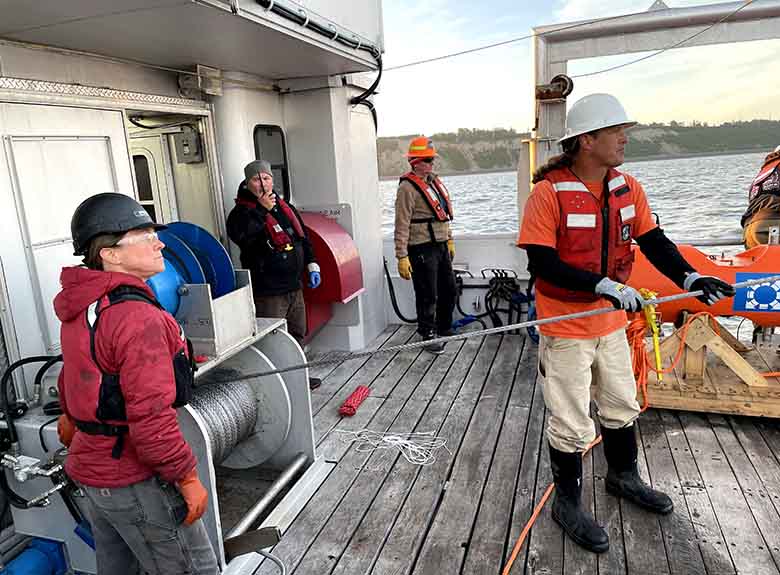
Today, as the lead technologist and data systems architect at the National Renewable Energy Laboratory (NREL), Weers is no longer helping readers feast on books about wizards. Instead, he is working a little data magic for the up-and-coming marine energy industry.
Collaborating with a cross-laboratory team that includes NREL senior researchers Rick Driscoll and Jay Huggins, a host of newer NREL staff, and partners from Pacific Northwest National Laboratory and Sandia National Laboratories, Weers created the Portal and Repository for Information on Marine Renewable Energy (PRIMRE), which amasses marine energy data from scattered portals into one centralized hub. With PRIMRE, companies and researchers can share and access the data they need to get their clean energy devices off the lab bench and into the water.
But PRIMRE is not a static database; it is growing, becoming more accessible to a broader range of users, and adding new data from a bigger pool of contributing organizations (which you can learn more about in the PRIMRE Overview video).
“You could have the greatest innovation in the world, but if you keep it to yourself, there’s no value to it,” Weers said. “That was happening a lot in the marine energy industry, in part because of its age—of all the renewable energy industries, it’s one of the youngest. There’s a lot of innovation. It’s a bit like the Renaissance.”
Across the United States and around the world, companies, academic institutions, and national laboratories have been collecting marine energy data for decades, tapping their individual reserves to hone thousands of different potential device designs. But all that rich information on, say, how a floating hexagon-shaped wave energy device compares to a snake-like flexible electricity generator has previously been housed in separate data repositories—or lost entirely.
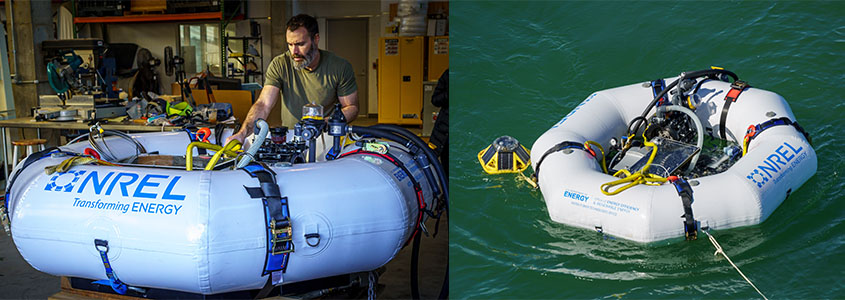
“Companies are springing up all the time with new device designs and ideas. Some of them are successful. And quite a few, for one reason or another, are not,” Weers said. Some designs might disappear because they cost too much or do not generate enough energy. But others might vanish simply because a company lost funding. “When those companies fizzle overnight, we’re losing a lot of innovation,” Weers said. “We’re losing a lot of ideas. We’re losing a lot of lessons learned.”
That is why Weers, with funding from the U.S. Department of Energy’s Water Power Technologies Office (WPTO), along with his counterparts at Pacific Northwest National Laboratory and Sandia National Laboratories, created the first centralized system, which consolidates marine energy data into one publicly available, searchable online library.
“At its core, PRIMRE is about information dissemination,” Weers said. “It’s organizing a lot of the marine energy information out there to give people a single place to figure out all this marine energy stuff.”
That marine energy “stuff” includes data on the features of diverse marine energy resources available in various U.S. ocean and river sites (like, for example, differing wave heights or energy potentials), how various device designs perform in specific locations, and how these technologies might safely coexist with marine wildlife and ecosystems.
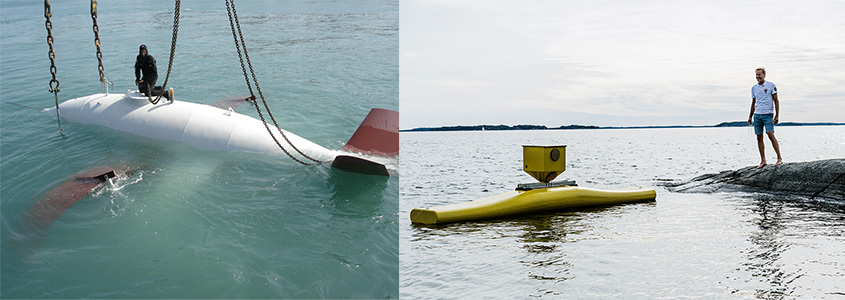
To consolidate all this data (and more), Weers and his fellow PRIMRE leads first combined large existing data libraries. NREL’s Marine and Hydrokinetic Data Repository houses data on device performance as well as software, created through WPTO-funded projects, that developers can use to evaluate early-stage marine energy designs. And the Pacific Northwest National Laboratory’s databases, called Tethys and Tethys Engineering, aggregate marine energy journal articles and other publications.
Today, PRIMRE’s data wealth comes from seven different knowledge hubs, as the team calls them—and more are on the way.
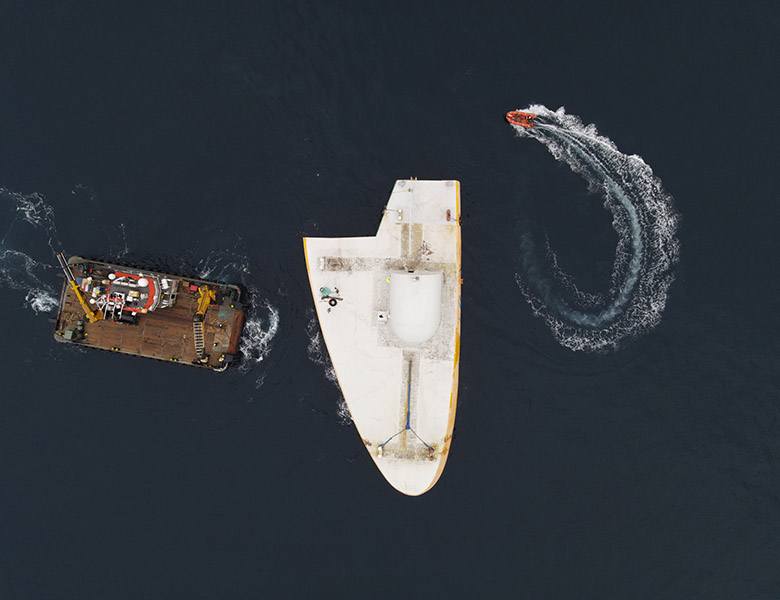
One new hub, Telesto, will provide guidance on testing, measurement, regulations, and standards so technology developers can accurately assess their device’s potential commercial value. “We’re trying to help people who are breaking into the industry to build on lessons learned and do things in standardized ways, so when they take their tool to market, they speak the same language,” Weers said.
And Weers and his colleagues are continuously feeding PRIMRE more data (such as a recent influx of historical wave data from NREL’s Marine Energy Atlas). They are also ensuring that, even though PRIMRE hosts a massive web of complex data, the interface is simple and easy to use.
“It’s like a map of neurons,” Weers said. “Anything can be connected to anything.”
That means users can ask a specific question like “Which companies are building horizonal-axis turbines?” and receive a list of companies plus what other devices those teams are working on and where such devices are being deployed. These so-called circular queries also allow researchers to “do some really cool analysis,” Weers said, like seeing which devices are being deployed more frequently.
Of course, not everyone can own a high-performance computer with enough power to download the kind of massive data sets that PRIMRE houses. That is why the team recently integrated PRIMRE with the Open Energy Data Initiative to create something called a data lake. With a data lake, users no longer need to download data to their institution’s supercomputer; instead, they can access all of it in a cloud.
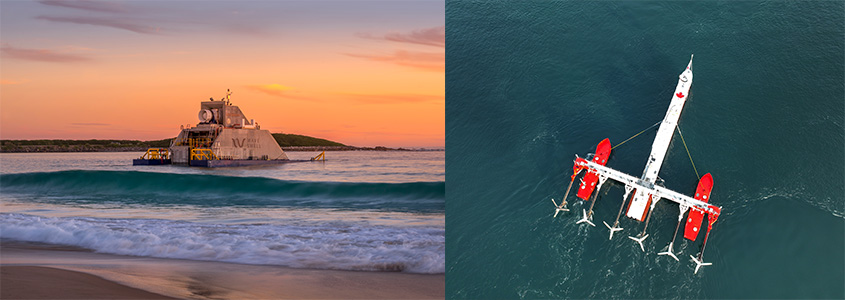
“Now, with the data lake, anyone with an internet connection can play with this data,” Weers said. “So, we’ve opened the door for the U.S. Department of Energy to collaborate with many organizations that may be new to marine energy, like small universities, startup companies, high schools, and community colleges.”
This data lake already helped a team of students from the comparatively small Purdue University compete and win the 2021 Marine Energy Collegiate Competition. When the students gave their acceptance speech at the competition’s virtual closing session, they specifically thanked the PRIMRE team for making marine energy data more accessible. “Without that, we never would have been able to win,” Weers recalled them saying.
“That example sums up what PRIMRE is trying to do: increase the accessibility and the discoverability of this emergent marine energy information. The faster we get the info to developers, the faster the pace of innovation in marine energy and the more viable it becomes as a renewable energy technology,” Weers said. “A rising tide lifts all boats.”
Visit PRIMRE to find marine energy data on power performance, environmental monitoring, device testing guidance, software code, and more. And subscribe to the NREL water power newsletter, The Current, to make sure you don’t miss a water power update.
Last Updated May 28, 2025
